6293
Top Node.js Development Trends 2023 You Cannot Miss
04 Apr, 2023
7 min read
6293
04 Apr, 2023
7 min read
Table of Content

The world of technology is fast-evolving with changing trends and technologies at a rate of knots. Amidst this, keeping your website relevant has become an extensive challenge for businesses. You not only have to choose mature yet up-to-date technology for your web applications but also have to keep up with the latest trends.
For today’s blog post, I have picked one of the most popular frameworks for web app development as of 2023. Yes, Node.js Development is multiplying in popularity and usage, so the statistics suggest.
According to a 2022 survey conducted by Statista, about 47.12% of respondents chose Node.js as their preferred web framework, surpassing React.js. Clearly, it is quite in demand! More so for its usage as a server-side technology for MEAN and MERN stack development.
Going forward, I will talk about some of the latest Nodejs development trends you should watch out for in 2023! But before I enlist those, let’s see how Node.js works.
Often called a web framework, Node.js is actually a backend, open-source, and cross-platform Javascript runtime environment. It was released in May 2009 and operates on Windows, Linux, MacOS, Unix, SmartOS, OpenBSD, and several other operating systems.
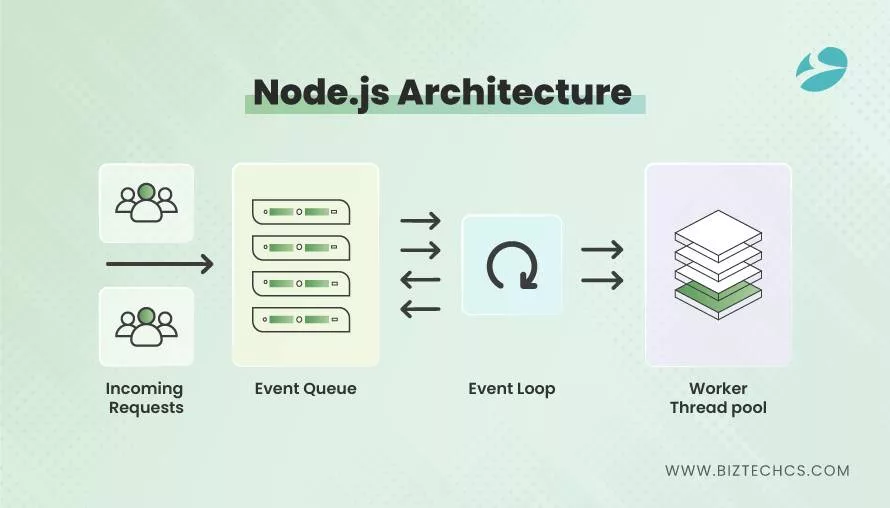
NodeJS Architecture
Node.JS utilizes an event-driven architecture that consists of basically three major steps:
Though it is single-threaded, it is capable of handling a thread pool for accepting blocking and non-blocking I/O requests.
NodeJS framework can be used for developing backend web applications that need to handle an extensive number of concurrent connections. Here are some of the popular brands that use Node.js:
As you can see, Node.js has been used by some of the most renowned brands from various sectors, right from eLearning to eCommerce. Now, let’s check the reasons why you should use Node.js for your enterprise.
Read more: Why Top Companies Go With Node JS Development for Their App?
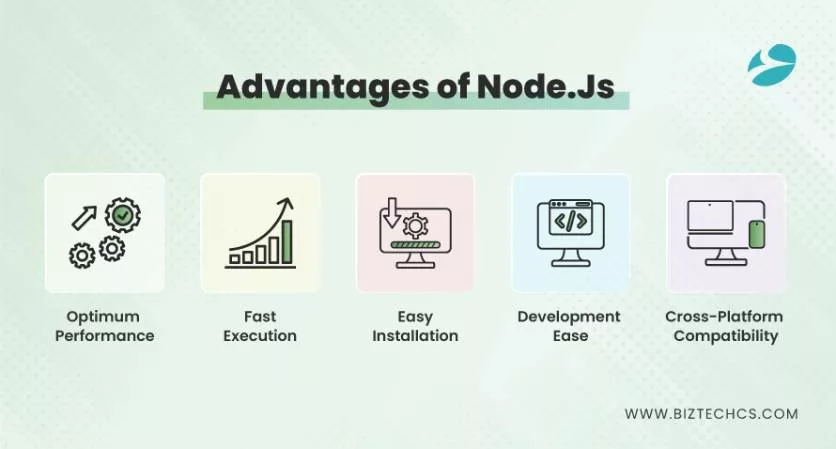
Read Also: NodeJS vs Python
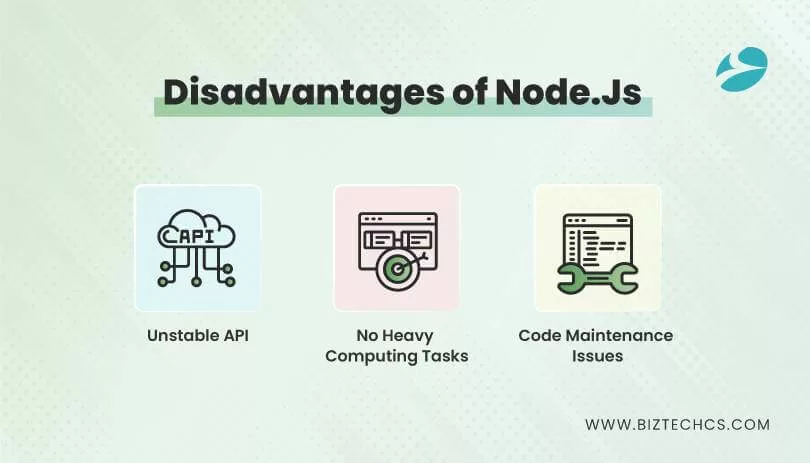
So, these are some of the advantages and disadvantages of Node.js you must note. In case you are comparing NodeJs vs ReactJs or researching why you should choose Node.js over other technologies, this should help you make a sound decision.
I bet you’re more aware of Node.js technology now than you did before! Moving on, I would like to talk about some of the top Node.js development trends that no one can miss out on.
Let’s check!
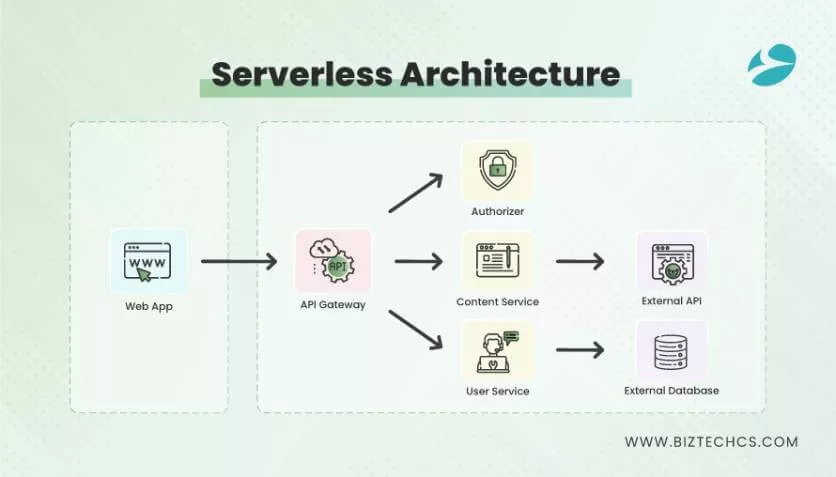
Node.Js Serverless Architecture
In a traditional setting of server architecture, a developer had to take care of the database, servers, and infrastructure. But, with serverless architecture, you will be able to build and deploy web applications without the hassles of managing servers.
Also known as FaaS (Function as a service), this architecture is popular with renowned companies like Google (Google Cloud Platform), Amazon (Amazon Web Services), and Microsoft (Microsoft Azure). With their ready-to-use solutions, developers can develop software without any worries about infrastructure.
In this respect, Node JS plays a pivotal role as it provides developers the flexibility to code once and execute anywhere. Here are some advantages of Node.js serverless architecture:
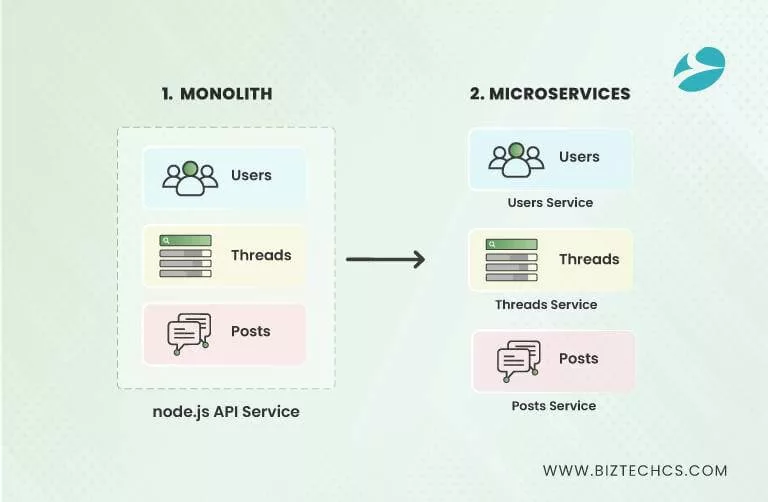
Microservices
Have you ever visited an automobile manufacturing plant? If you have or you have checked videos, you would know how various parts are created individually in different departments and then sent to assembly for assembling them into a unit.
Much like this, Microservices work as an interconnection of multiple standalone services with their own processes, connected using network protocols like HTTP. Executing multiple services simultaneously helps with rapid development, scalability, continuous deployment, and delivery.
Why microservices is considered an emerging Node JS trend?
That’s because of the frameworks Express.js and Nest that make building Microservices much simpler for you. Its independent development, reusability, and scalability make it a much preferable trend by businesses of all sorts.
Here are a few noted advantages of Microservices:
In our rapidly evolving tech industry, we’ve been talking about real-time applications for more than 10 to 15 years. Since then, there have been many real-time applications, such as:
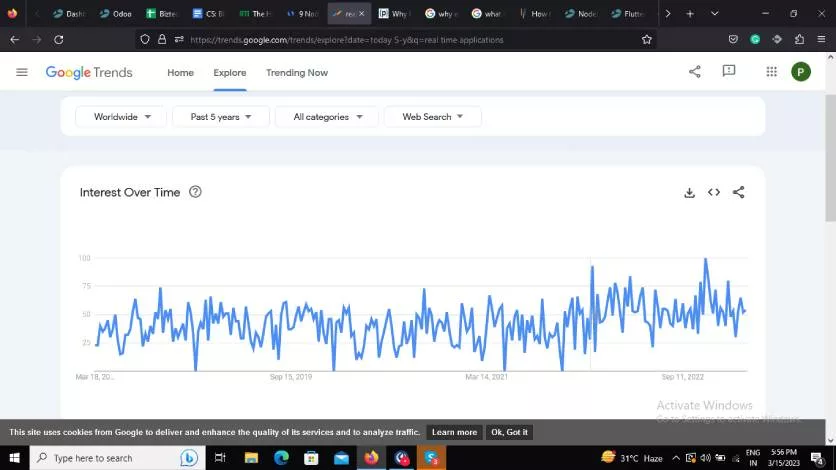
Search Trend for Real-Time Applications (Past 5 years)
If we look into the Google trends for ‘Real Time Applications’ for last 5 years, it is evident that it is not dying down. In fact, it has become the new norm in many sectors right from gaming to social media platforms.
Why Node JS works well for real-time applications will keep being a trend in 2023? Well, there are more reasons than one!
Mean and Mern stack technologies are quite popular amongst businesses. In fact, you can easily find Mern and Mean developers when you contact a Node.js development company.
Even development companies prefer hiring Mean and Mern stack developers because of the popular demand for two tech stacks and how they can be used cohesively for developing client-side as well as server-side applications.
Both tech stack is capable of developing even complex applications, making it one of the most popular trends to watch out for in 2023.
Check more about Mern vs Mean vs Full stack.
The query language GraphQL allows clients to interact with their databases through one common endpoint. The data structure is provided by the user as they desire and the server returns the same data structure.
GraphQL is suitable for developing not just simple APIs but applications that need to handle significant amounts of data from numerous sources. Thus, developing Node.js applications with GraphQL is much faster and more efficient.
The IoT market worldwide is expected to surpass $1.1 Trillion in 2023. Clearly, there seems immense growth for IoT applications in the market. For those who don’t know, IoT (Internet of things) devices are devices like smart speakers, health wearables, smart home appliances, and others.
Integrating IoT with software applications results in more sophisticated products that can serve even complex objectives. And Node JS is a perfect technology for developing IoT applications since it is fast, lightweight, and the code can be reused.
It is evident that Node.js is quite popular as a technology. And with these development trends, you can build even more spectacular software for your business. Through this blog post, I hope you can be more aware of the latest NodeJS development trends that are going to rule 2023.
However, you may need to connect with a leading Node JS development company and consult experts to know which trends will work most to your benefit. Want to build a Node JS web application for your business? Our developers can be of assistance!
We extend Node js development services to businesses of all sizes and sectors. Let’s connect to talk more about your requirements.

Development
241
By Devik Gondaliya
09 Jul, 2025

Odoo
7876
By Biztech
04 Jul, 2025
Odoo
523
By Devik Gondaliya
02 Jul, 2025